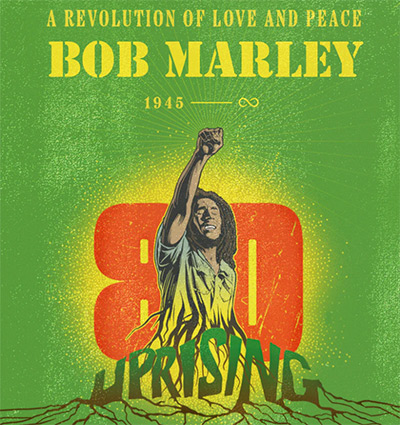Who Put the Bomp? The Origins of Music’s Most Distinctive Grooves
From funk to disco and reggae to the honky tonk shuffle, these are the stories behind some of the most distinctive grooves.

Deee-Lite once told us, “groove is in the heart,” but first and foremost, the groove gets you right in the gut. That holds true, no matter what kind of music you’re listening to – whether it’s reggae or ranchera. If the rhythm isn’t happening, you’ve got a big bag of nothing. But where do you get the kind of groove that’s revolutionary enough to kick off an entire genre? It’s a magic trick that’s happened again and again. Suddenly there’s a style all its own with an unmistakable beat at its center. And, as often as not, the more popular a sound becomes, the more its origins get lost in the shuffle. So, let’s shine a spotlight on the where, when, why, and how behind just a few of the most distinctive grooves to spawn an entire musical universe unto themselves.
The Bo Diddley Beat
You know you’ve made a mark when you have a rhythm named after you. Bo Diddley wasn’t actually the first to play the beat that bears his name, but he’s the one that made it stick. The propulsive groove, akin to getting punched three times in the stomach and then twice in the face (in a good way), can be traced back to an African phenomenon called the Juba dance. This was adapted by enslaved Africans in the U.S. into a style of polyrhythmic hand-slapping called hambone (which eventually became hand jive). The rhythm’s first recorded appearance was probably Chicago drummer/bandleader Red Saunders’ 1952 single “Hambone,” where it’s dropped right into the middle of the track. But when Bo laid it down on his self-titled 1955 hit, the music world was changed forevermore.
Boogie Woogie
The steady-rolling boogie-woogie rhythm at the core of the blues anatomy was being pounded out by piano players before records even existed. So, the true origins are lost to the mists of time. But the first record with a boogie-woogie beat was probably 1924’s “Chicago Stomps” by Jimmy Blythe. Still, it was blues piano giant Pine Top Smith who had the first real boogie-woogie hit (and the first to mention the style’s name) with “Pine Top’s Boogie Woogie,” recorded at the tail end of 1928 and released the following year. With the genie out of the bottle, boogie woogie begat everything from country boogie and the blues shuffle to jump blues and rock ‘n’ roll.
Honky Tonk Shuffle
For decades, if you played country music, you had two basic options in the rhythm department: a two-step or a waltz. It wasn’t until 1956 that Ray Price changed the game with “Crazy Arms.” Price had been Hank Williams’ running buddy and took over his band after Hank died. But Price was a Texas boy who loved the jumping Western Swing of Bob Wills & His Texas Playboys, and in 1956 – partially in reaction to the rise of rockabilly – he fused Hank’s honky-tonking sound with Wills’ swing and the four-on-the-floor rhythm of rock ‘n’ roll. The result defined the honky-tonk feel from that moment forward.
The Funk Groove
James Brown’s status as the father of funk is unchallenged. But there’s a bit more to it than the standard story. Most funk detectives identify his 1965 smash “Papa’s Got a Brand New Bag” as the origin of funk’s sexy, syncopated on-the-one groove. But in fact, his minor 1964 hit “Out of Sight” got there first. With the same rhythm section that would anchor “Papa” (Bernard Odum on bass and Melvin Parker on drums), the single takes a nearly identical rhythmic route, with that crucial first-beat accent and a rhythm that must have sent scads of inexperienced rump-shakers boogieing to their chiropractor’s office.
Tex-Mex Rock ‘n’ Roll Stomp
This one is a slugfest between two Texas mavericks. While there were Chicano rockers almost from the time there was rock ‘n’ roll, it wasn’t until the mid-’60s that Mexican styles like Tejano and conjunto were really rocked up. Little Joe & The Latinaires were probably the first to come close, but they alternated between the two rather than really blending them. February 1965 was Tex-Mex rock ‘n’ roll’s Big Bang, with the debut singles of Sam the Sham & The Pharaohs and The Sir Douglas Quintet: “Wooly Bully” and “She’s About a Mover,” respectively. Domingo “Sam” Samudio and Doug Sahm’s songs both had organ leading the way, with rhythms the accordion would be playing in Tejano/conjunto music, but in a rock ‘n’ roll framework.
The Reggae Beat
At its core, reggae has always been all about the beat, and its first evolutionary phase arrived with the jumpy sound of ska in the late 1950s, which was basically what happened when Jamaicans turned the American R&B grooves they admired inside out. By the mid-’60s, that beat was rejiggered into the more settled-down sound of rocksteady, which evolved at the end of the decade into the supple syncopation of reggae. A handful of 1968 singles edge close enough to the reggae side of the rocksteady/reggae divide to lay claim to the “first reggae rhythm” distinction, including Monty Morris’s “Say What You’re Saying,” Lee “Scratch” Perry’s “People Funny Boy,” and Bob Andy’s “Unchained.” Which came first? Good luck figuring it out, but the band that really codified the change on record was Toots & The Maytals (then known simply as The Maytals) with “Do the Reggay,” not just because it was the first tune to use the term, but because it was a Jamaican equivalent to Martha & The Vandellas calling out around the world to ask, “Are you ready for a brand new beat?”
Dancehall
In reggae, the template for a signature groove is known as a riddim, and an influential one can be adapted by tons of artists. In 1985, the one that changed the game by initiating the digitally generated dancehall style came about when keyboardist Noel Davey got together with singer Wayne Smith and kicked out a bass-and-drum pattern on a humble little Casio keyboard. With King Jammy adding a few flourishes, it became “Under Me Sleng Teng.” Reckoned to be the most widely disseminated riddim ever, it was onboarded by Tenor Saw, Yellowman, Super Cat, and literally hundreds of others, becoming dancehall’s foundational riddim and paving the way for reggae’s next metamorphosis. Fun fact: the Casio preset it’s based on was allegedly inspired by David Bowie’s “Hang on to Yourself.”
Afrobeat
The propulsive, polyrhythmic heartbeat of Nigeria’s most influential musical export began with the musical conversation between a revolutionary bandleader and a rhythmic visionary. In 1969, multi-instrumentalist Fela Kuti and drummer Tony Allen started the Africa ‘70 band, forging a new Nigerian sound that was wrapped around rhythms as sinuous and sensual as they were intense and unrelenting. The Afrobeat pulse is what happened when they blended the polyrhythmic force of Yoruba drumming and highlife with the sexy, serpentine funk grooves of the James Brown band and added a politically propelled fury. A movement was born, and we’re still hearing the reverberations today.
The Disco Beat
The four-on-the-floor kick drum driving disco’s takeover of pop culture in the second half of the ‘70s became ubiquitous so quickly that even early on, it seemed like it must have always been there. The first big hit with a real disco groove was 1973’s Philly soul classic “The Love I Lost” by Harold Melvin & The Blue Notes,” with Philadelphia International’s resident beatmeister, Earl Young, on the drums. But the trail was being blazed as early as 1972, when The Intruders’ “(Win, Place or Show) She’s a Winner” and The Trammps’ “Zing Went the Strings of My Heart” arrived within weeks of each other. It should be no surprise to learn that both tunes also featured Young on drums.
Hi-NRG
One of disco’s most distinctive offshoots, Hi-NRG is – as its name implies – basically disco on steroids. Bearing a jacked-up BPM rate and eschewing any trace of funky syncopation for a mechanistic (often electronic) feel, especially in the bassline, it helped set the stage for a wide swath of 80s pop and became de rigueur in discos. Though the style really hit its stride in the 80s, its origin lies in Donna Summer’s Giorgio Moroder-produced 1977 milestone, “I Feel Love.” It’s a bit slower than most of what would end up under the Hi-NRG umbrella, but it’s very clearly the origin of the genre (and much more).












